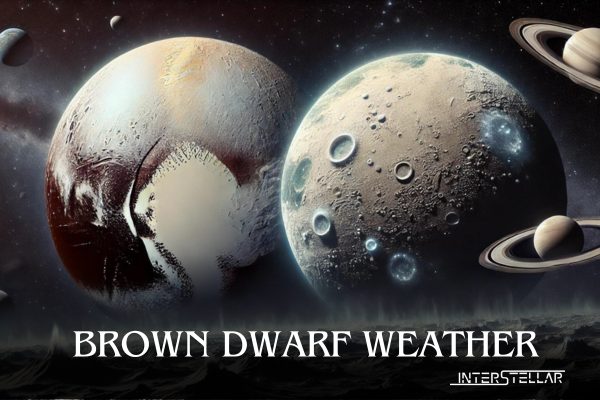Extreme Weather Found on Nearest Brown Dwarfs
Researchers have discovered extreme weather on the two closest brown dwarfs using the James Webb Space Telescope. These celestial bodies, larger than planets but smaller than stars, exhibit incredibly harsh conditions.
Detailed Examination with James Webb Space Telescope
The James Webb Space Telescope provided an in-depth examination of the atmospheric conditions on a pair of brown dwarfs. Located six light-years from Earth, these brown dwarfs orbit each other closely. A light-year is the distance light travels in a year, equivalent to 5.9 trillion miles (9.5 trillion kilometres).
The telescope’s data offered a three-dimensional perspective on weather changes over a brown dwarf’s rotation. The larger brown dwarf rotates every seven hours, while the smaller one rotates every five hours. Multiple cloud layers were found at various atmospheric depths.
Harsh Atmospheric Conditions
Both brown dwarfs have atmospheres mainly composed of hydrogen and helium, with small amounts of water vapour, methane, and carbon monoxide. The temperature at the cloud tops is about 1,700 degrees Fahrenheit (925 degrees Celsius), similar to a candle flame.
Astronomer Beth Biller of the University of Edinburgh’s Institute for Astronomy, lead author of the study published in the Monthly Notices of the Royal Astronomical Society, stated, “In this study, we created the most detailed ‘weather maps’ for any brown dwarf to date.”
Characteristics of Brown Dwarfs
Brown dwarfs are unique as they are neither stars nor planets but lie somewhere in between. They emit light due to their heat, similar to glowing embers in a fire. However, unlike stars, they lack nuclear fusion at their core. The clouds in their atmospheres consist of hot silicate particles, akin to a Saharan dust storm, but at much higher temperatures.
Brown dwarfs form from large clouds of gas and dust like stars, but they do not have enough mass to start nuclear fusion. Their composition is similar to gas giant planets like Jupiter, with a mass up to 80 times greater. In contrast, the Sun’s mass is about 1,000 times that of Jupiter.
Formation and Observation of Brown Dwarfs
The two brown dwarfs observed by Webb formed around 500 million years ago. Each has a diameter comparable to Jupiter, with one being 35 times more massive and the other 30 times. Webb’s observations revealed how their light varied as atmospheric features rotated in and out of view.
“The fast rotation of both objects helps to drive their weather patterns,” said Biller. This rapid rotation likely creates bands and vortices similar to Jupiter’s Great Red Spot. These techniques could also help study weather on potentially habitable exoplanets in the future.
Future Research and Technological Advancements
Brown dwarfs are relatively common, with around 1,000 known compared to over 5,000 known exoplanets. The James Webb Space Telescope, which examines the cosmos mainly in infrared wavelengths, offers a significant advancement in understanding these complex atmospheres. Its predecessor, the Hubble Space Telescope, primarily operated at optical and ultraviolet wavelengths.
Astronomer Johanna Vos of Trinity College Dublin, a co-author of the study, highlighted the telescope’s capabilities: “Webb provides a huge leap forward in our ability to understand these atmospheres by providing unprecedented wavelength range and sensitivity.”
Vos added, “These different wavelengths allow us to monitor the atmosphere from very deep to very shallow, giving a comprehensive look at the full extent of the atmosphere.”


